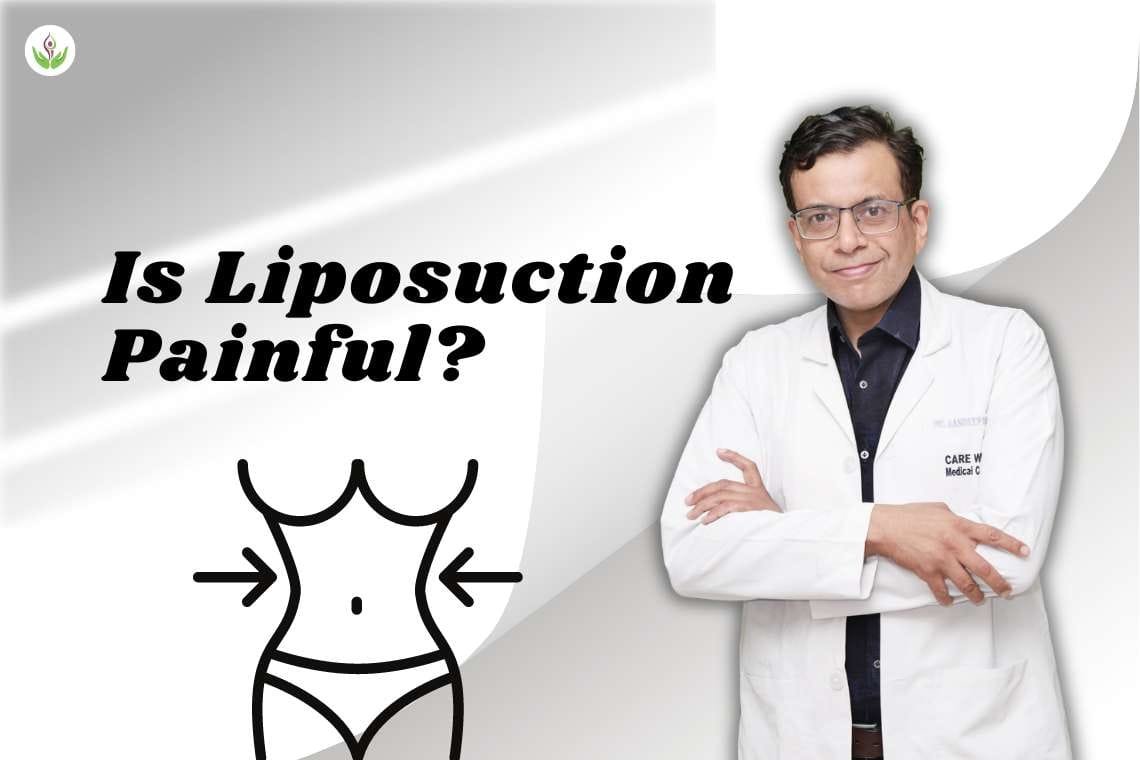Liposuction, a popular cosmetic procedure, often raises questions about its discomfort levels. Many individuals considering this treatment wonder if undergoing liposuction is a painful experience. In this article, we go into detail about liposuction pain, including the process, ways to deal with it, and the things that affect how much it hurts. Wondering, “Is liposuction painful?” Understandably, it’s a common concern. Let’s delve into the reality behind liposuction discomfort.
Understanding the Procedure
Liposuction removes excess fat from different body areas, such as the abs, legs, buttocks, arms, and neck. Surgeons use local anesthesia with sedation or general anesthesia. The choice depends on the amount of fat removal and the patient’s preference.
Subcutaneous Fat Removal
During liposuction, surgeons insert a tiny tube called a cannula through small cuts in the skin. They use the tube to remove excess fat from under the skin, reshaping the treated areas. The process goes after subcutaneous fat, which is fat that is under the skin but above the muscle layer.
Types of Liposuction Techniques
Several liposuction techniques are available, each with its unique approach and advantages. Common techniques include traditional liposuction, tumescent liposuction, ultrasound-assisted liposuction (UAL), and laser-assisted liposuction (LAL). The choice of technique depends on factors such as the patient’s anatomy, desired results, and the surgeon’s recommendation.
Does Liposuction Hurt?
The perception of pain during liposuction varies among individuals and depends on several factors, including pain management strategies employed during the procedure and postoperative care.
Pain Management During the Procedure
Patients usually receive sedation before liposuction to minimize pain. Local anesthesia with sedation or general anesthesia numbs the treated area, ensuring a painless procedure. Surgeons may also use tumescent fluid injection, which has local anesthetics and vasoconstrictors in it, to cut down on pain and bleeding even more.
Pain During Liposuction:
- You won’t feel pain during the procedure itself, as you’ll be under either local or general anesthesia.
Postoperative Pain and Recovery
Following liposuction, patients may experience varying levels of discomfort during the recovery period. Common postoperative symptoms include swelling, bruising, and soreness in the treated areas. The surgeon’s pain medication helps control these symptoms and ensures a quicker recovery.
Pain After Liposuction:
- Expect: Discomfort, tenderness, soreness, and a bruised sensation in the treated areas. This is normal and usually manageable with medication and compression garments.
- Individual Experiences: Pain perception varies greatly. Some describe it as mild, while others find it more intense.
Factors Affecting Pain Levels
Pain during and after liposuction varies based on a person’s pain tolerance, the amount of fat removed, and the surgeon’s skill and technique.
Factors Affecting Pain:
- Type and Extent of Procedure: Larger areas or sensitive regions like the abdomen might cause more discomfort.
- Individual Pain Tolerance: Everyone has different thresholds for pain.
- Healing Process: Discomfort usually peaks in the first 2-3 days and gradually subsides within 1-2 weeks.
Individual Pain Thresholds
Each person has a different pain level, which shows how sensitive they are to pain. While liposuction is happening, some patients may feel very little pain, while others may find it more painful. Talking to the surgeon about how much pain the patient can handle and any worries they have can help the pain management plan fit the patient’s needs.
Amount of Fat Removed
The amount of fat removed during liposuction can affect postoperative pain levels. Larger volumes of fat removal may result in increased tissue trauma and discomfort. Surgeons often suggest staged treatments for people who need to lose a lot of fat so that they have less pain and problems after surgery.
Surgeon’s Skill and Technique
The surgeon’s experience and technique play a crucial role in minimizing pain and ensuring optimal results. Experienced surgeons employ advanced liposuction techniques and prioritize patient comfort throughout the procedure. Choosing a board-certified plastic surgeon with a proven track record can significantly reduce the risk of complications and enhance the overall experience.
Addressing Common Concerns
To ease your worries about liposuction pain, it’s important to think about different ways to deal with it and ways to recover.
Anesthesia Options
Talking to the surgeon about the different types of sedation lets the patient choose the best method for their needs. Both local anesthesia with sedation and general anesthesia can effectively control pain during the operation. The choice depends on things like the patient’s taste and how much fat needs to be removed.
Pain Medication
Patients who have had liposuction are given painkillers to help them deal with their soreness during the early stages of healing. Nonsteroidal anti-inflammatory drugs (NSAIDs) and prescription painkillers can help ease pain and speed up the healing process. It’s important to do what the surgeon tells you about how much medicine to take and how often to take it to get the best pain relief.
Recovery Tips
Getting the right care after surgery and doing what the doctor says is very important for reducing pain and speeding up recovery. People with this condition are told to follow the directions on their compression clothing, stay away from hard activities, and keep their follow-up visits for tracking and advice. Maintaining a healthy diet and doing light physical exercise can also help with healing and improve results.
Managing Pain After Liposuction:
- Medication: Your doctor will likely prescribe pain medication to manage discomfort. Follow their instructions carefully.
- Compression Garments: Wearing these garments helps reduce swelling and bruising, indirectly contributing to pain management.
- Rest and Activity: Getting adequate rest promotes healing and minimizes pain. However, gentle exercise that has received doctor approval can also help with recovery.
- Ice Packs: Applying ice packs to treated areas can provide temporary pain relief and reduce swelling.
Real Patient Experiences
Many people who have had liposuction say they were happy with how well the pain was managed and how the results turned out overall. Real patient reviews give potential patients important information about how painful the treatment is and how long it takes to heal, which helps them make smart choices about their beauty goals.
Liposuction Treatment in Delhi: Care Well Medical Centre
Care Well Medical Centre offers top-notch liposuction surgery in Delhi. With experienced surgeons and state-of-the-art facilities, they ensure safe and effective procedures for achieving your desired body contour.
Important Considerations:
- Realistic Expectations: Don’t expect to be completely pain-free after surgery. Understand that discomfort is part of the healing process.
- Communication: Openly discuss your pain concerns and experiences with your doctor. They can adjust pain management strategies as needed.
- Alternatives: Explore non-surgical fat reduction methods if pain concerns are significant. Remember, liposuction isn’t a weight-loss solution and comes with inherent risks.
Remember that this information is just for your general knowledge and is not meant to be medical advice. Always get specific advice from a trained medical professional about liposuction and its possible benefits and risks.
Conclusion
Finally, liposuction can be painful, but new methods and ways to deal with pain have made it much less painful than people used to think it was. People can feel confident about getting liposuction and getting the results they want by learning about the process, looking into pain control choices, and talking about common worries.
FAQs
Pain levels vary among patients, but most experience significant improvement within the first week after surgery. Full recovery typically takes several weeks, with residual soreness gradually diminishing over time.
Doctors advise patients not to drive immediately after liposuction due to sedation effects and possible pain. They recommend bringing a responsible adult for assistance on the day of the procedure.
Even though liposuction is usually safe for healthy people, it’s important to get a full medical exam and talk to your therapist about any health problems you already have. Some physical problems or ways of living may make the risks of surgery higher.
The amount of time off work depends on how complicated the surgery is and how fast the person recovers. Most people can do light tasks and go back to work a few days to a week after liposuction. However, they should avoid doing anything too hard for a few weeks.
After surgery, do what your doctor tells you to do, like wear compression clothing, take painkillers as prescribed, and go to follow-up visits. Can ease pain and speed up the healing process.














